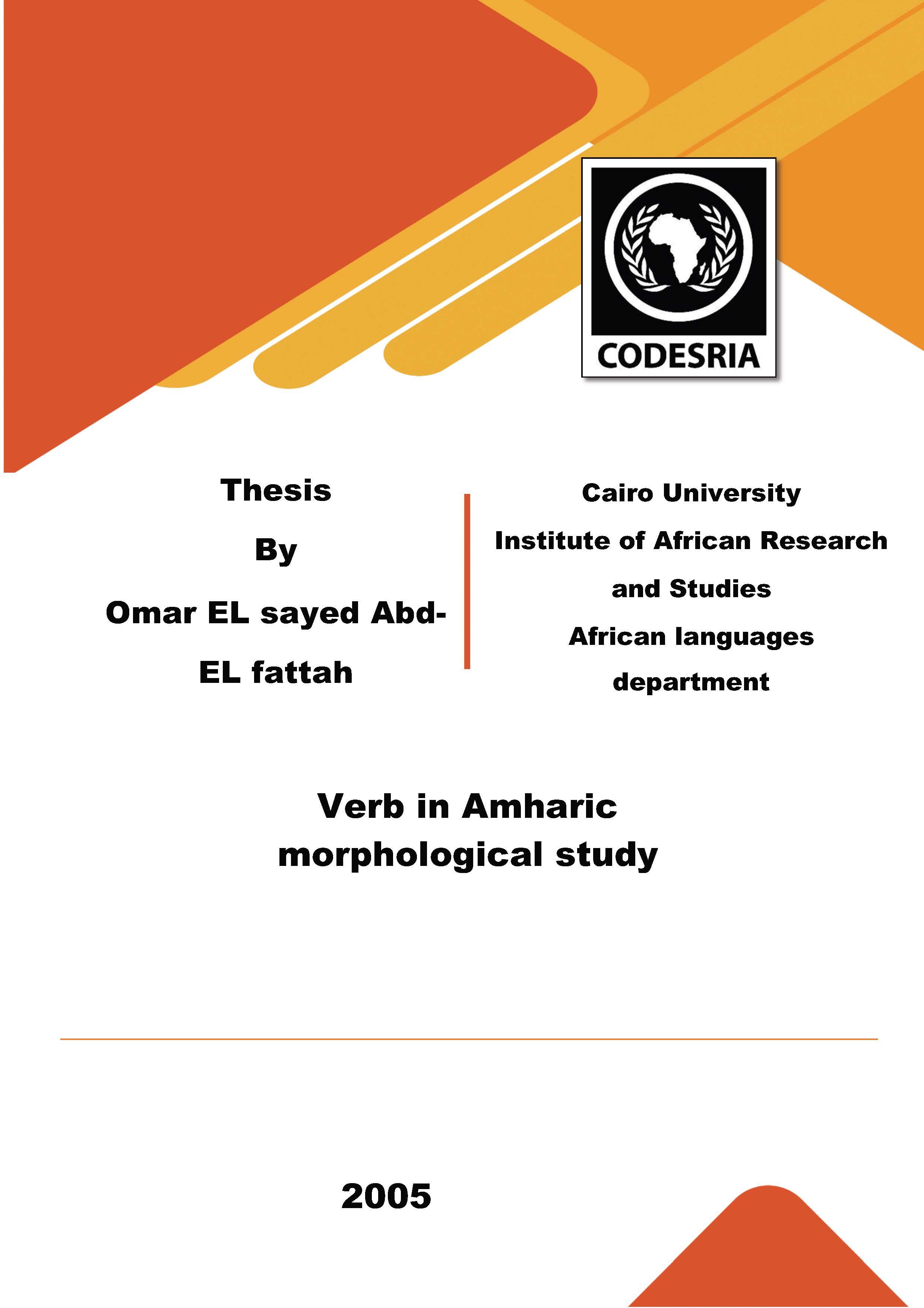Verb in Amharic morphological study
Keywords:
Amharic language, ethiopic languages, verb, morphology, EthiopiaSynopsis
Amharic is the official language of Ethiopia, spoken by between 17
and 18 million people as a mother tongue, and by as many again as
a second language. Amharic is understood almost the whole country.
Amharic belongs to the Semitic family of languages ( e.g. Arabie,
Hebrew, Ge'ez ... ). There are, however, somewhere between 70and 80
languages spoken within the political boundaries of Ethiopia, a greater
number of which are spoken by only a few thousand people. Despite its
long history, Amharic really became the written language of Ethiopia
from the second half of the nineteenth century onwards. Since that time,
Amharic has developed an extensive and sophisticated written literature,
making it one of the largest vemacular literatures in Sub-Saharan Africa.
This Thesis deals with the morphology of Amharic verb. That is
means it concems with the morphological forms and structure· of verb in
Amharic. In addition it concems also with the Amharic verb affixes
(prefixes, infixes and suffixes).
The chief Objective of the study is to find out the morphological
features, which distinguish Amharic verb. It also aims to focus on verb
basic and derived forms and analysis the inflection of Amharic verb
(Tense, Aspect, Mood, Person, Number, and gender).
On the other hand the thesis has a practical importance that it can
used in teaching Amharic.
The thesis uses the descriptive method, which study certain language
in a certain time. The study will use the Addis Ababa or Ethiopian
capital's standard of Amharic as research model.
In this study, I argue against the widespread claim made in the
descriptive literature on Amharic morphology that Amharic verb roots
consist of consonantal radicals ranging from one to six. The study will show
that all verbal roots have uniformly three or four radicals in their underlying
representations and that variations in the number of such radicals in surface
verbal forms is a result of extensions and /or reductions of one or more of
the three underlying radicals.
Downloads






